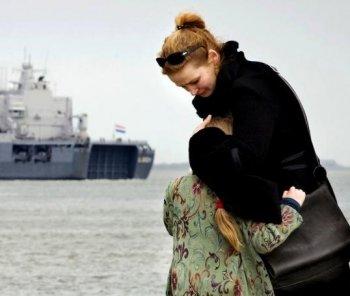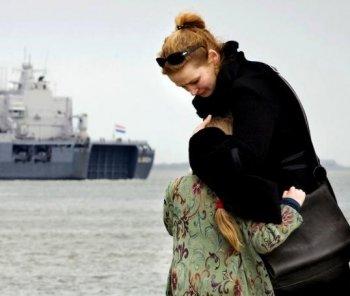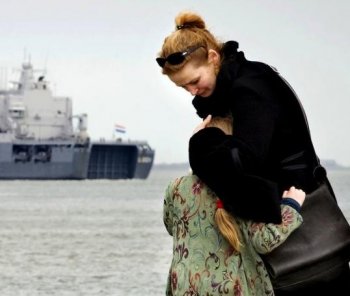Somali Pirates Attacks Hurt Ships’ Crews and Families
Warships from more than 10 countries were sent to patrol the Gulf of Aden—the only place that leads to and from the Suez Canal.

UNCERTAINTY: A young girl is comforted by her mother as the Dutch marine vessel Hr.Ms. Johan de Witt where her father is serving, leaves from the harbor of Den Helder on April 5. The ship has been sent to patrol as part of the E.U. counterpiracy mission off the coast of Somalia. Robin Van Longkhuijsen/Getty Images
|Updated:




